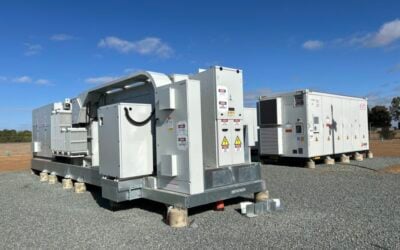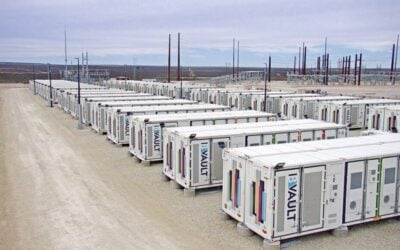World’s largest ‘second-use’ battery storage unit set to connect to the German grid
Carmaker Daimler has completed construction of the world’s largest energy storage facility using second-hand car batteries in Lünen, Westphalia, in Germany.
The new site, which utilises batteries from Daimler’s second-generation smart fortwo electric cars, will provide 13MWh of capacity to the German energy market by the end of the year. Daimler said the first power units are already plugged into the German energy grid.
Daimler said in a statement energy output from the facility will be made available to the “winner of weekly auctions among the network operators for primary controlling power range”.
The project, a joint venture between German firms Daimler, The Mobility House, GETEC and Remondis, will see 1,000 used EV battery systems grouped into a single storage solution.
Enjoy 12 months of exclusive analysis
- Regular insight and analysis of the industry’s biggest developments
- In-depth interviews with the industry’s leading figures
- Annual digital subscription to the PV Tech Power journal
- Discounts on Solar Media’s portfolio of events, in-person and virtual
Each partner takes a distinct role in the new operation, with Daimler covering the initial manufacture and configuration of the battery systems, The Mobility House and GETEC handling their installation and marketing to the energy markets, and Remondis taking charge of their recycling at end-of-life.
Meanwhile, German manufacturer Bosch said in a blog post it has worked with car giant BMW and energy company Vattenfall on a parallel storage project using “second-life” EV batteries. Its project, located in Hamburg, incorporates 2,600 battery modules from 100 electric cars, and provides 2MW of output and 2.8MWh of capacity.
“This energy is available within seconds to stabilize the power grid,” it said in the post.
The German Ministry for the Economy and Energy (BMWi) wants around 45% of power consumed in Germany to be generated from renewable resources by 2025, increasing to around 60% by 2035.
EV batteries remain operational even after the electric vehicles themselves have been scrapped. Daimler said: “If used in stationary power storage, the systems are fully operational even after the service life guaranteed by the manufacturer – with slight capacity losses only of secondary importance. Cost-effective use in stationary operation is possible for at least 10 years longer.”
US carmaker GM is using repurposed Chevrolet Volt batteries, originally used in Chevrolet’s Volt extended-range electric cars, for energy storage from solar and wind generation at its vehicle testing facility in Milford, in Michigan. The Volt batteries supply power to its Milford data centre; excess energy is returned to the grid supplying the rest of the Milford site.
A similar scheme is in place in Japan, where Japanese trading company Sumitomo has struck a joint venture with Nissan Motors to reuse electric vehicle batteries.






